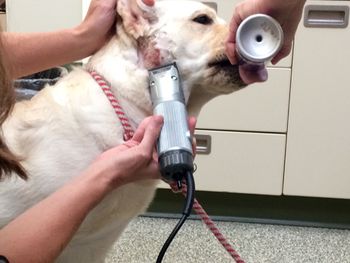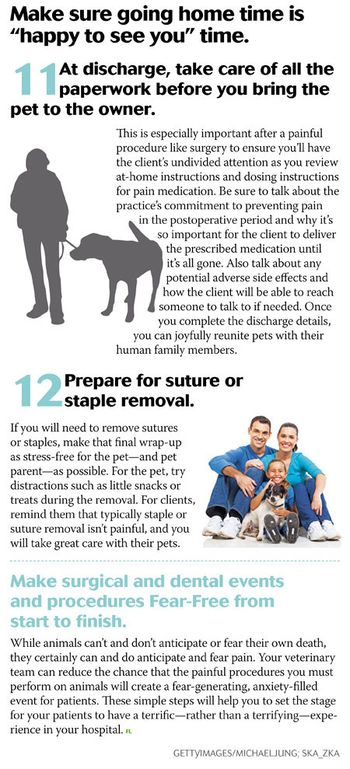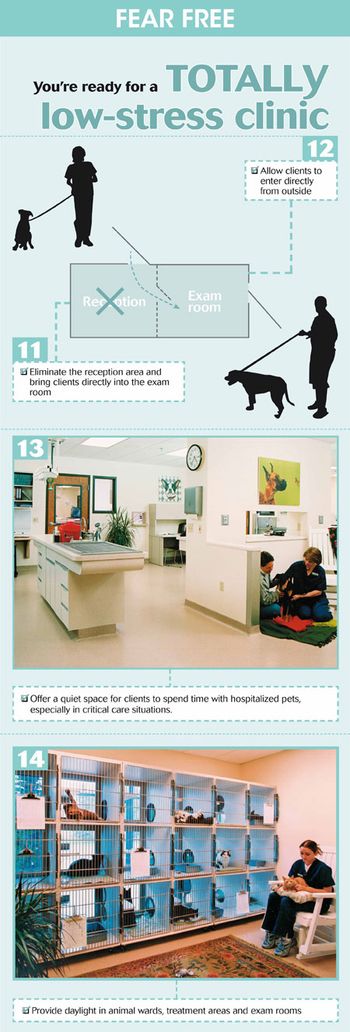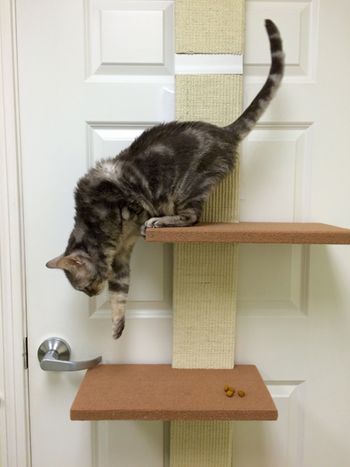
Disagreement over biting dog's aggression led to expulsion.

Disagreement over biting dog's aggression led to expulsion.

Use this handout to explain the effects of fearand how your veterinary practice works to reduce pets fear.

Teach cat owners what they can do to keep their cats happy and healthy this September.

Pass these tips on to your clients, and enhance the well-being of your feline patients.

To manage an animals behavior, you must first start by managing your own behavior. Use these eight steps to manage your mood.

We used a Hansel and Gretel trail of cheerios and a bottle of squeeze cheese to coach a shy pet through a potentially scary veterinary visit.

Patients simply may not understand what you're asking of them, the team at Animal Emergency & Referral Associates go inside this issue.

Using canned squeeze cheese our veterinary team took the trauma out of taking a pets temperature.

Teaching this dog to accept and be comfortable wearing a basket muzzle has allowed the clients to move forward with behavior modifications and training while ensuring the safety of those in the veterinary clinic as well as the safety of other dogs he may meet on the street.

This tool will help you take measures now to make every visit a positive one for every pet, ensuring that when more serious issues arise, you can achieve an optimal outcome.

Is the shadow of pain haunting pets at your veterinary practice? Shine a light on pain management to help dispel pets' fear.

Does your practice sound scary to pets?

Reducing noise is an important factor as you plan for Fear-Free veterinary visits. Hitchhike on pets' exquisite sense of hearing to identify the common noise triggers in your practice.

A calmer trip to your veterinary practice means pets may arrive less stressed. And wouldn't that be nice?

What does a practice team need to do to be Fear-Free? That's an open question, but here is a checklist that tries to gather the very latest on the topic. Find out what you're doing, what you could start and what's going to need you to think about it for a while before trying ...

Counterconditioning and desensitization prove key in reducing the anxiety felt by patients that don't like being touched.

An exclusive, brand-new look at cutting-edge thinking on low-stress patient care for beginners, intermediate experts and Fear-Free gurus.

Never call Dr. Richard LeCouteur an amygdala! Here's why.

This Toronto hospital has clients beating down the doors requesting a lower-stress approach to veterinary care.

At dvm360, we asked veterinarians and team members what theyre doing now to help keep fear at bay during veterinary visits. Here are 18 strategies that we compiled from their responsesthese ideas have been tested in the trenches.

What happens in the amygdala stays in the amygdala.

Don't be so quick to label a dog as dominantly aggressive. Chances are it is just scared or confused.

See how stimuli, counterconditioning, desensitization and medication come into play.

Have you embraced this movement yet? No matter what level your veterinary practice is ready for, we've compiled everything you need to decrease patient stress and anxiety.

This practice found the purr-fect cat climber for their feline patients. No kitten around. Fur real.